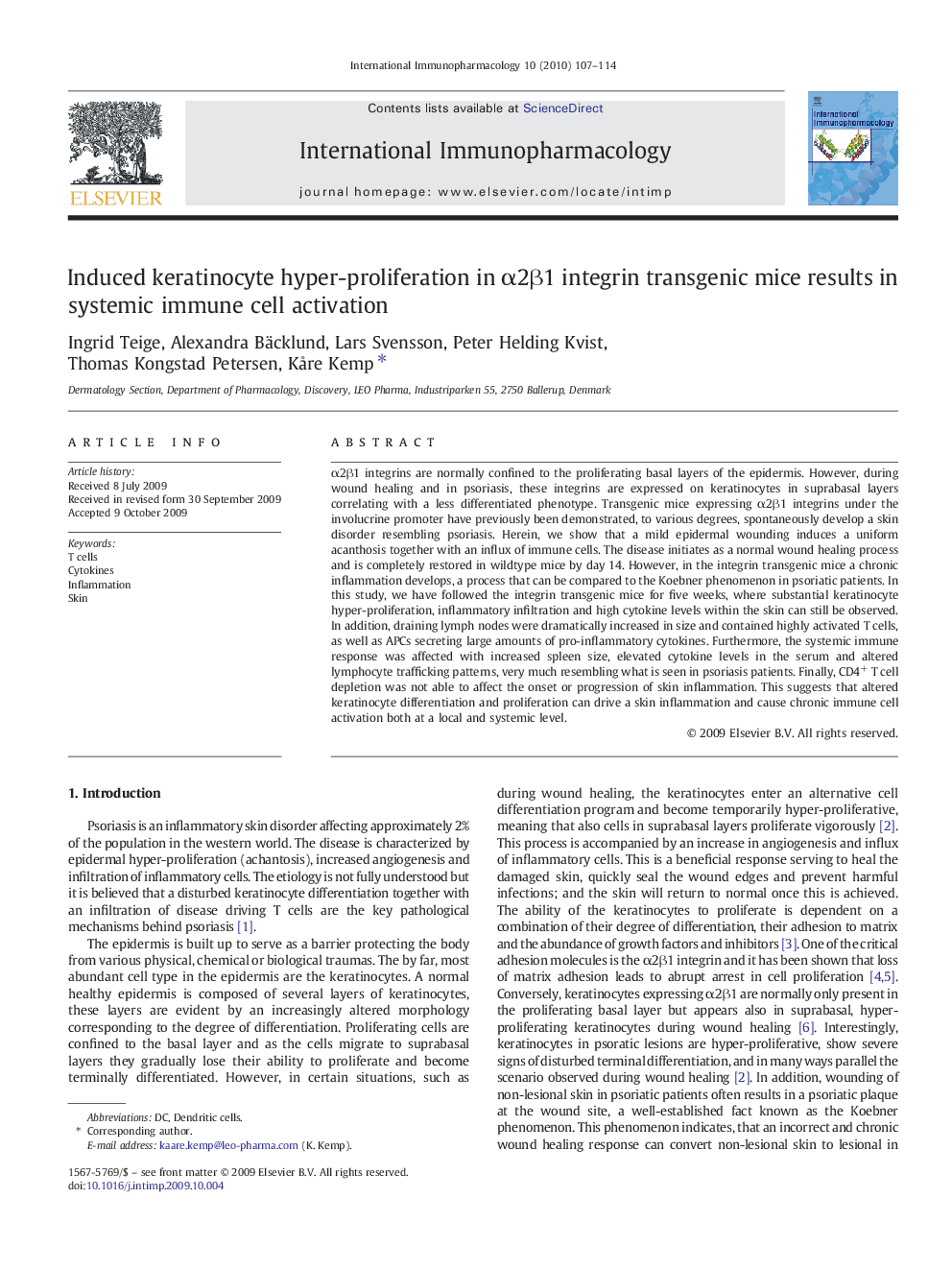| Article ID | Journal | Published Year | Pages | File Type |
|---|---|---|---|---|
| 2541251 | International Immunopharmacology | 2010 | 8 Pages |
α2β1 integrins are normally confined to the proliferating basal layers of the epidermis. However, during wound healing and in psoriasis, these integrins are expressed on keratinocytes in suprabasal layers correlating with a less differentiated phenotype. Transgenic mice expressing α2β1 integrins under the involucrine promoter have previously been demonstrated, to various degrees, spontaneously develop a skin disorder resembling psoriasis. Herein, we show that a mild epidermal wounding induces a uniform acanthosis together with an influx of immune cells. The disease initiates as a normal wound healing process and is completely restored in wildtype mice by day 14. However, in the integrin transgenic mice a chronic inflammation develops, a process that can be compared to the Koebner phenomenon in psoriatic patients. In this study, we have followed the integrin transgenic mice for five weeks, where substantial keratinocyte hyper-proliferation, inflammatory infiltration and high cytokine levels within the skin can still be observed. In addition, draining lymph nodes were dramatically increased in size and contained highly activated T cells, as well as APCs secreting large amounts of pro-inflammatory cytokines. Furthermore, the systemic immune response was affected with increased spleen size, elevated cytokine levels in the serum and altered lymphocyte trafficking patterns, very much resembling what is seen in psoriasis patients. Finally, CD4+ T cell depletion was not able to affect the onset or progression of skin inflammation. This suggests that altered keratinocyte differentiation and proliferation can drive a skin inflammation and cause chronic immune cell activation both at a local and systemic level.
